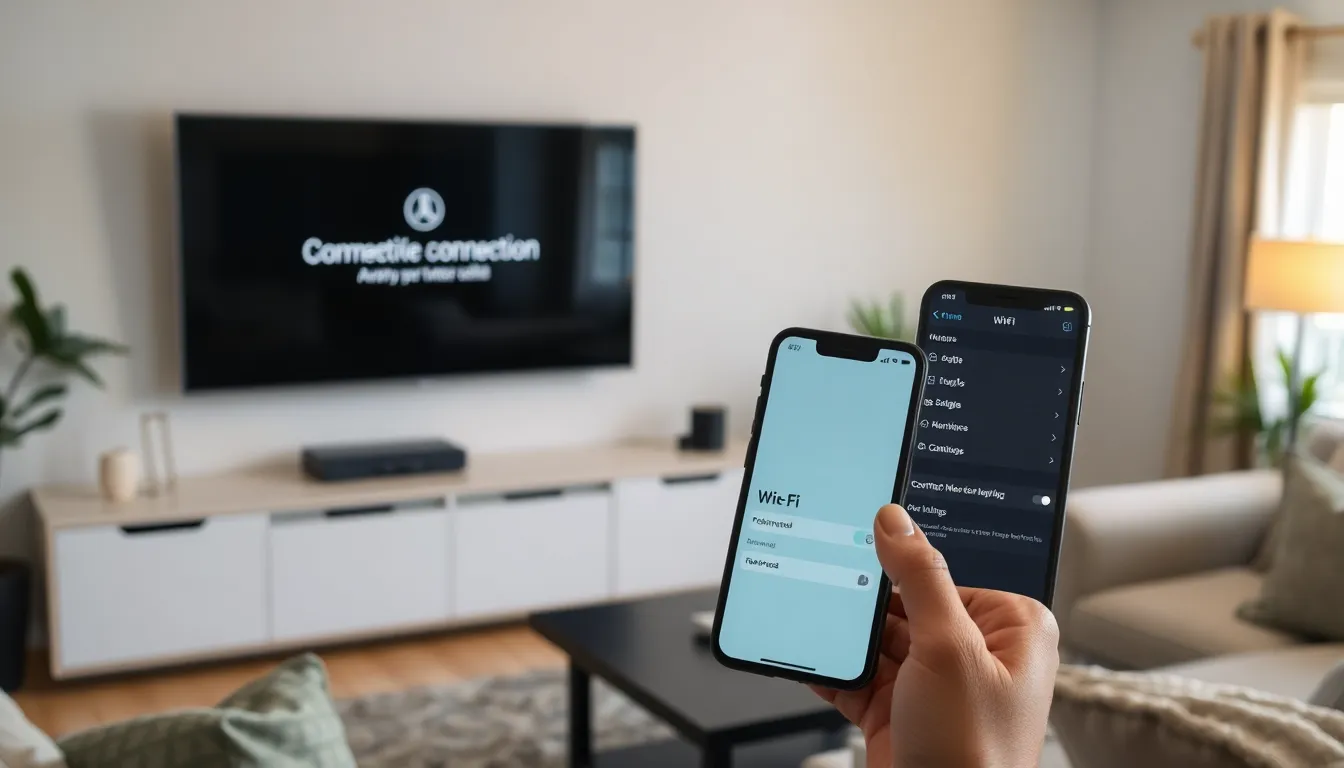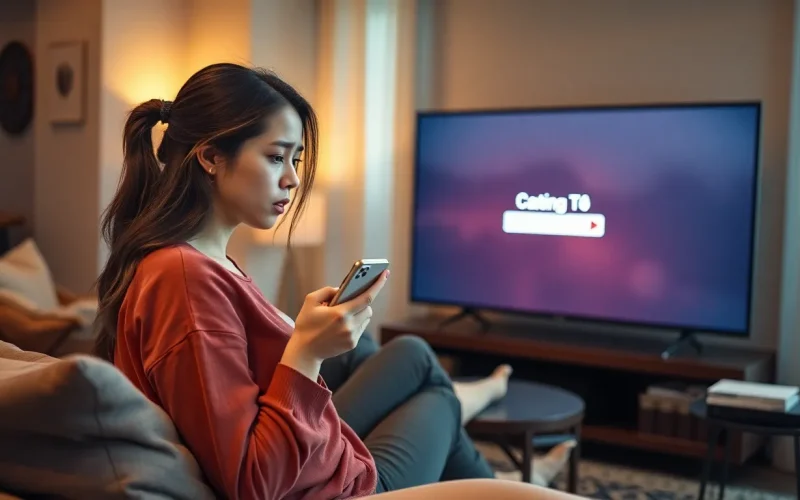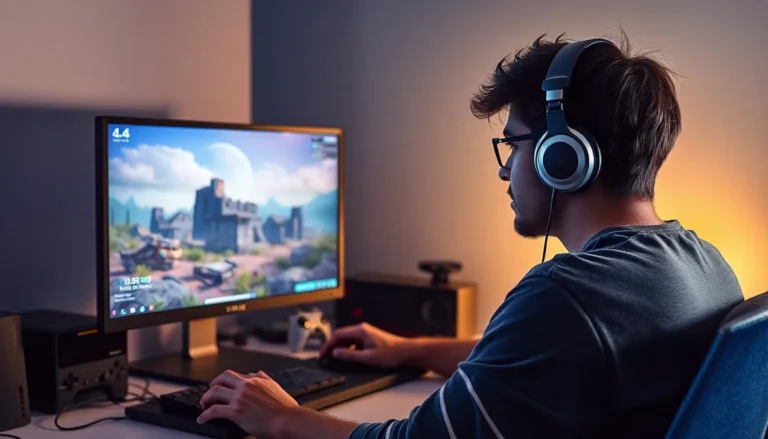Table of Contents
TogglePicture this: you’re all set for a cozy movie night, popcorn in hand, but your iPhone suddenly decides it’s on a solo mission. You tap the cast button, and nothing happens. Frustration kicks in as you wonder, “Why can’t I cast to my TV from my iPhone?” It’s like your phone’s playing hard to get, and you’re left feeling like the lead in a romantic comedy—confused and slightly desperate.
Don’t worry, you’re not alone in this digital drama. Many iPhone users face the same casting conundrum. From pesky settings to compatibility issues, a few hiccups can turn your streaming dreams into a tech nightmare. But fear not! By the end of this article, you’ll be equipped with the know-how to turn that stubborn iPhone into a casting pro, ensuring your movie nights are nothing short of spectacular.
Common Reasons For Casting Issues
Casting from an iPhone to a TV often encounters several common problems. Understanding these issues can help troubleshoot the casting experience.
Network Connectivity Problems
Network connectivity issues represent a primary cause of casting problems. Both the iPhone and TV must connect to the same Wi-Fi network. A weak Wi-Fi signal can interrupt the casting process, leading to failure in detection. Many users find that restarting the router improves connectivity. Additionally, forgetting and reconnecting to the Wi-Fi network on both devices frequently resolves glitches. Checking the network stability ensures a seamless casting experience.
Incompatible Devices
Incompatibility between devices may prevent successful casting. AirPlay requires a compatible smart TV or streaming device, such as Apple TV or Chromecast. Some older TV models lack support for casting features. Identifying the device’s compatibility through manufacturer specifications proves helpful. Updates to the TV firmware or iOS can also enhance compatibility between devices. Researching device capabilities ensures users can cast content without issue.
Troubleshooting Steps

Follow these troubleshooting steps to resolve casting issues from an iPhone to a TV. The process often involves simple solutions that can lead to successful connections.
Restarting Devices
Restarting both the iPhone and TV can clear temporary glitches. Press and hold the power button on the iPhone until the slider appears, then slide to power off. For the TV, locate the remote’s power button or unplug it. Wait for about 10 seconds before turning both devices back on. This refresh can often resolve many connectivity problems.
Checking Wi-Fi Settings
Checking Wi-Fi settings plays a critical role in ensuring both devices connect. Users should access the settings on their iPhone and confirm it’s connected to the correct Wi-Fi network. Additionally, verifying the TV’s connection to the same network is essential. If any discrepancies arise, reconnecting both devices to the Wi-Fi may resolve issues. Ensure that network names match exactly to avoid confusion.
Alternatives To Casting
iPhone users exploring options to cast content to their TV can consider several alternatives. Utilizing these methods can enhance their viewing experience without relying solely on wireless casting.
Using HDMI Cables
Connecting an iPhone to the TV using an HDMI cable offers a reliable alternative to casting. Users need an HDMI adapter compatible with their iPhone model. This setup ensures a stable connection without worrying about Wi-Fi network issues. After connecting the adapter to the iPhone and HDMI cable to the TV, selecting the correct input source is crucial. The screen should mirror instantly, allowing for seamless viewing of content, including videos and games.
Third-Party Apps
Exploring third-party apps provides another method for casting from an iPhone to a TV. Various applications facilitate screen mirroring and streaming, catering to different content types. Some popular options include Mirroring360 and LetsView, both of which can work directly with smart TVs. Downloading the desired app on both the iPhone and TV simplifies the process. Once set up, users can effortlessly stream movies, music, and photos, overcoming casting limitations while enjoying diverse entertainment options.
Preventative Measures
Implementing key strategies can prevent casting issues between an iPhone and a TV. Users should consider several factors to ensure smooth casting experiences.
Keeping Software Updated
Updating software on both the iPhone and the TV often resolves compatibility issues. iPhones typically receive updates regularly, enhancing features and fixing bugs. Smart TVs also require updates; manufacturers release new software versions for improved performance and casting capabilities. Regularly checking for updates prevents outdated software from hindering functionality. Users should enable automatic updates whenever possible to minimize disruptions. Keeping software up to date helps maintain optimal performance during casting sessions.
Ensuring Device Compatibility
Compatibility significantly affects the casting experience; not all devices support AirPlay or casting features. Users must confirm that both the iPhone and TV support the same casting protocol. Many modern smart TVs offer casting capabilities, but older models might not. Checking the manufacturer’s specifications can clarify device compatibility. Consulting online resources or user manuals aids in verifying functionality before attempting to cast. Ensuring compatibility between devices maximizes the chances of a seamless connection.
Casting from an iPhone to a TV shouldn’t be a source of frustration. By understanding the common issues that can arise and implementing the troubleshooting steps outlined, users can often resolve these challenges quickly. Whether it’s ensuring both devices are on the same Wi-Fi network or exploring alternative connection methods like HDMI cables, solutions are readily available.
Staying proactive with software updates and checking device compatibility can further enhance the casting experience. With the right approach, users can enjoy seamless streaming and make the most of their viewing moments.





